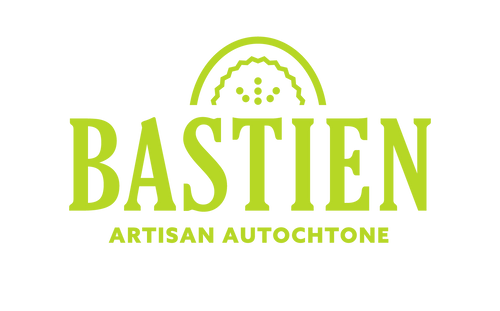Kwe!
As you may already know, at Bastien we craft authentic indigenous moccasins, arahchiou’.
In order to honor this heritage and to offer you a high quality product, Bastien moccasins are handmade, from step 1 to the final touch — and also to the packaging.
In our workshop in Wendake, there is no conveyor belt. Moccasins are passed from hand to hand, from person to person.
Why do we handcraft our moccasins?
Because we believe in offering quality arahchiou’ that respect the tradition of our ancestors. And, above all, because we want to preserve indigenous employment. We want to develop an indigenous expertise in traditional First Nations arts and crafts.
What does it take to handcraft moccasins? Work, patience, accuracy... A work in 8 steps presented here.
Step 1: Receive and sort hides
We craft the Bastien with genuine leather. We are using 3 different type :
- Calfskin
- Moose hide
- Suede
These hides are sent to the workshop in rolls. We inspect them one by one to make sure they are flawless. If it is, we send it back.
After inspection, we sort them by type in our warehouse. They are then ready for step 2, tailoring.
Where does our leather come from?
We understand that the origin of our leathers and their treatment is an important concern for you. It is also important to us. That's why we select our leathers with an indigenous perspective.
We want a quality product, but also as responsible, circular and local as possible. All our leathers (and even our other materials) come from Quebec, Canada or North America.
Step 2: Tailoring the materials
Step 2 involves tailoring each piece of leather that makes up a moccasin with a hydraulic press and die.

Our tailor places the die of the sole part of the moccasin on the moose leather. He will then pull the hydraulic press (orange machine) towards him to place it over the punch and cut the piece.
Every morning, we receive the day's orders. We then prepare the necessary quantities of hide for tailoring. Then three of us set up at the hydraulic press with the dies to cut the moccasin patterns from the leather that matches the model.
The tailor pays careful attention to the leather. They try to cut it with minimal waste and place the pattern pieces according to the stiffness of the hide. They also look for marks and adjust their cuts accordingly. This happens especially with moose hides, because in the wild they have had a life that may have left scars.
During the cutting process, we gather the different pieces of moccasins in lots. These lots then go on to the third step, assembly.
Step 3: Assembling the moccasin
After tailoring, we prepare the individual moccasin pieces for sewing.

Our seamstress holds in her hand the result of her work to assemble the edges and the sole. On the edges, small holes that will be used for lacing by hand.
The lots of pieces pass through the hands of one of our team members who refines the edges of the patterns with a skiving machine for leather. Then, they glue the soles on the corresponding piece of leather. They also perform the collage of the linings between different pieces of leather.
For our soles, we use 3 types depending on the model:
- Leather
- Rubber — molded in Ontario
- Crepe — also molded in Ontario
For linings, we use foam or felt depending on the model.
At the end of this step, the various pieces of lining and sole are sent to the next assembly step, the sewing.
Step 4: Sewing the moccasin
In the fourth step, we sew the different parts of the moccasin together.
We first sew the sole, glued in the previous step, to the leather of the moccasin so that it is firmly attached (glued/stitched). Then, our craftsmen and craftswomen assemble the different parts together in order to complete the moccasin.
We use commercial Puritan sewing machines to sew the soles. The machines in our factory are a model that dates back to the late 19th century. This machine has a very linked history with the manufacture of shoes and arahchiou' of leather. It still sews in several factories, including ours.

After being assembled at the sewing machine, the moccasin goes to the lacing stage by hand.
Step 5: Hand lacing and beading
After stitching together the sole and the edges, we have to assemble the top of the moccasin to the rest. For this task, we send the moccasins to craftsmen and women from Wendake and the surrounding area.
These people hand-lace the top of the moccasin and tie it to the rest. They also bead the moccasin to decorate it according to the models or the orders.
After the lacing and the beading, the moccasin is back in our factory to pass to the stage of blocking.
Step 6: Blocking the moccasin
This step involves forming the moccasin and blocking it to the foot size it fits. This process prevents the leather from stretching and distorting after purchase.
To be blocked, the moccasins return to the workshop. We then place them on shoe lasts according to their respective size. We then send them to a room heated at high temperature for several hours.
After this heating time, we pull the moccasins out and let them cool down. They are now in the final form. They are then removed from the lasts and move on to quality inspection and packaging.
Step 7: Inspecting and packing
At this stage, the eagle eyes of one of our colleagues inspect every moccasin one by one. They inspect them for defects, loose seams, missing beads, etc. Some of the moccasins are then sent back to the sewing department (or elsewhere) for touch-ups.
After the inspection and touch-ups, the moccasins are packed in boxes and sorted by order for shipment.
Step 8: Shipping
The eighth and final step is shipping. Boxes are gathered by order and sent to our customers, mainly boutiques, by a shipping company.
That's it. This is how we make Bastien by hand, one step at a time.
You want to see our different models or buy your Bastien? Visit our online store. You prefer to buy in store? Find the stores where we retail them in our Points of Sale page.
Tiawenhk, entïio' chia' önenh!
Wendat words of the day
Photo credit : Alexis Pageau





